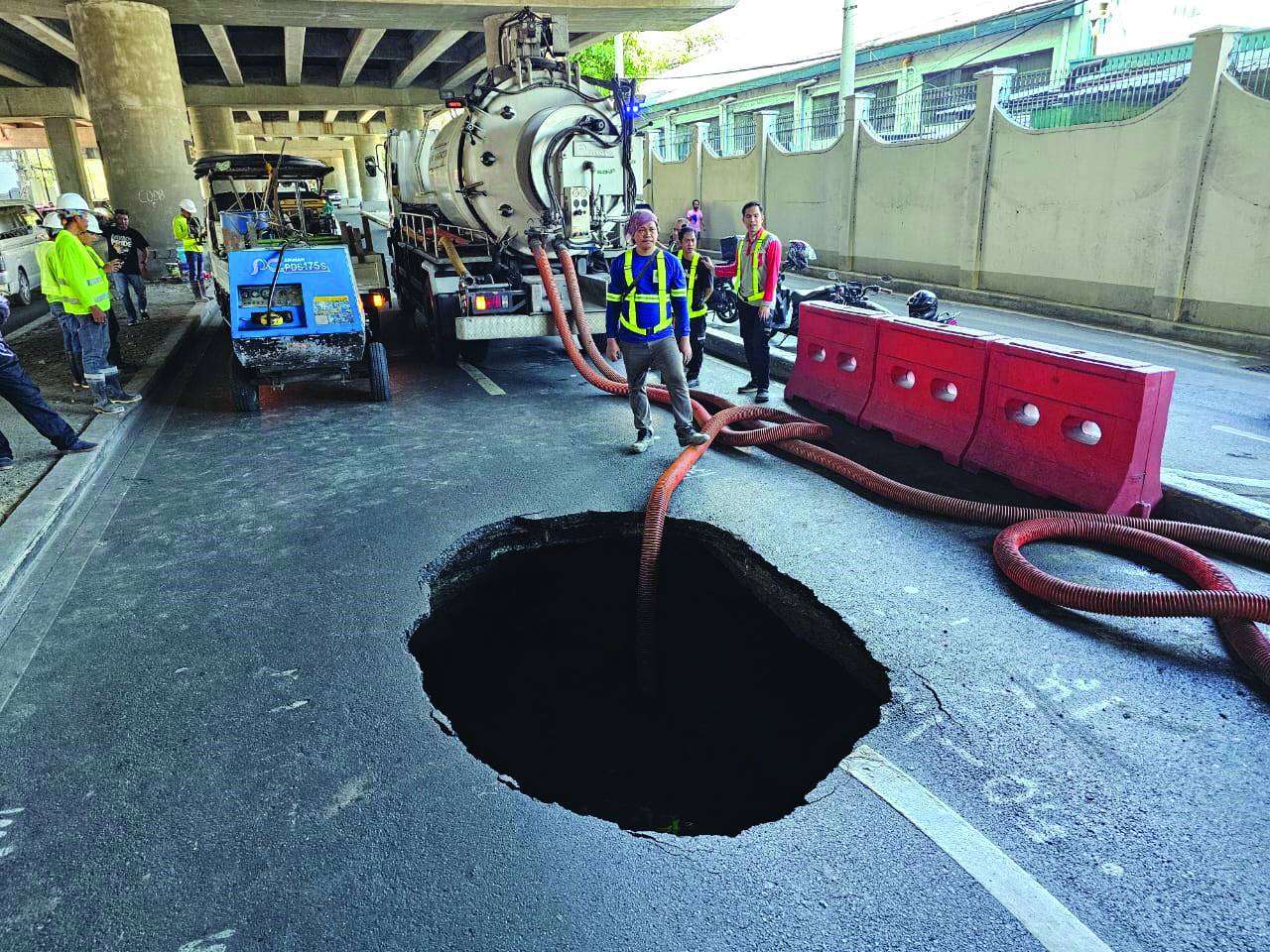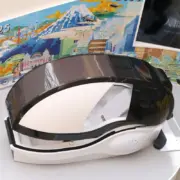How to drive around sinkholes and other lethal road hazards

It’s already a given that roads in the Philippines aren’t the best in the world.
Indeed, if aliens who lived on the Moon were to visit a major Metro Manila thoroughfare like EDSA or C-5, they’d say, “Oh! I feel homesick.” But kidding aside, one road imperfection in Pasay City was so out of this world that it continues to have traction on social media and the national news cycle.
The Metropolitan Manila Development Authority (MMDA) announced on Sunday that it had spotted a large sinkhole smack-dab in the middle of Sales Road, just in front of Gate 3 of the Villamor Air Base. It advised motorists to find alternate routes after closing the road.
Given that Sales Road is one of the major arteries leading into and out of the Ninoy Aquino International Airport, this has resulted in even greater congestion on the area’s already overburdened road network. But credit where credit is due – the MMDA’s swift closure of the road prevented a potentially deadly catastrophe.
All this hullaballoo got me thinking – what if you encountered a gaping chasm or some similar road hazard on your travels? Is it avoidable or are you resigned to accepting a potentially expensive (or worse, lethal) fate?
Given that our team at Angelspeed Motorsports conducts advanced-driving events, here are some tips that we think will help you handle these horrors.
Follow traffic rules
All these tips won’t make sense if you drive like you’re qualifying for the upcoming Chinese Grand Prix.
Section 35 of Republic Act 4136 or the “Land Transportation and Traffic Code” stipulates the speed limits for passenger cars on various roads – 20 km/h on crowded streets, 30 km/h on city streets with light traffic, 40 km/h on boulevards with no traffic, and 80 km/h on open highways.
Certain areas may also have special rules and ordinances related to speed, such as the 60 km/h limit on Commonwealth Avenue in Quezon City, and the 100 km/h limit on expressways.
Keeping your speed down is simple physics – the faster you go, the more inertia your car has, thus making it harder for you to slow down or do evasive maneuvers.
Keep your car in good shape
Your driving may put you on the path to sainthood, but if your car is as well-maintained as our roads, you’re still in danger of eternal damnation.
One of the biggest issues that we encounter when we train new drivers is improperly maintained cars that have bald tires, improper alignment, leaking brake fluid, crushed suspension bushings (a source of that infernal kalampag), and even broken lights.
That’s why in many national racing series, scrutineers will stop a car from participating if it poses a hazard to the driver and to other racers. Taking greater care of your car will not only preserve its value and prolong its life, but also prepare you for any disasters.
Sit properly
In grade school, our teachers always told us to sit straight because being slumped over was a surefire way to fall asleep.
The same principle applies to driving – having the correct seating position helps you be more alert so that you can respond to any emergency. We train our students to recline their seat very slightly and raise the height as much as possible so that they have full visibility of the car’s corners.
Then they must adjust the seat distance to ensure that they can depress all the pedals without fully extending their legs. Finally, their arms must be slightly bent when the wrists are rested atop the steering wheel.
When driving straight, the hands must always be at the 9 o’clock and 3 o’clock position so that you grasp more of the steering wheel.
Practice braking and steering
And so, the ultimate test.
You’re driving along at night, doing the speed limit, in your impeccably maintained car. Then out of nowhere, a lost lunar alien emerges from a sinkhole ahead of you).
You may scream, but you may not panic – the first instinct must be to apply maximum braking with the wheels straight, as you may hit a vehicle beside you. If your car doesn’t have anti-lock brakes, make sure to release and reapply the brakes if the wheels lock up.
For more advanced drivers, as long as your surroundings are clear, you can simply swerve around the alien by releasing the brakes and steering around, without moving your hands from the aforementioned steering position. You must release the brakes first to help the car maneuver better, but don’t apply any throttle.
Hopefully, these tips keep you, your loved ones and even our alien friends, safe on our journeys. -BY VJ BACUNGAN
















